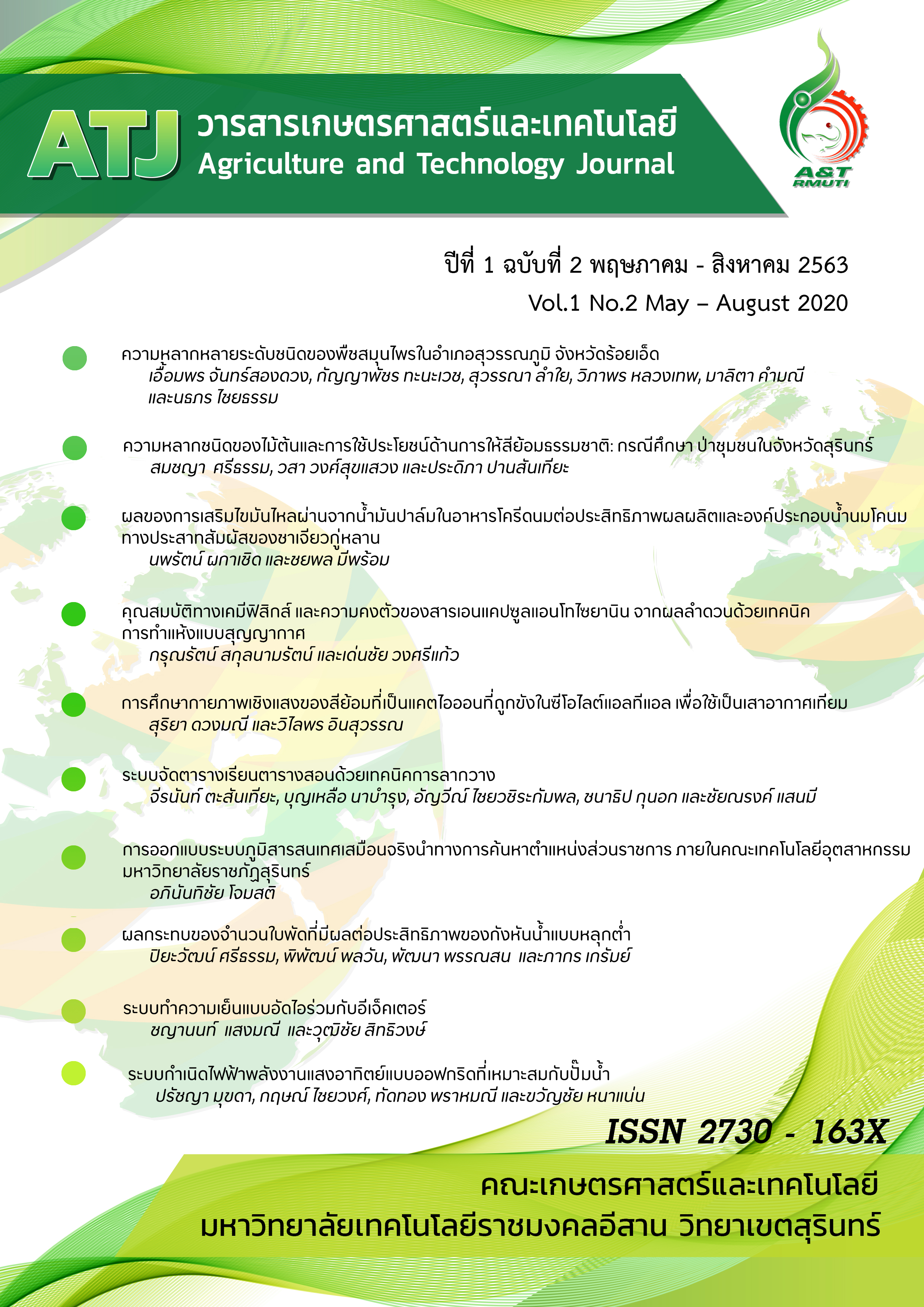Diversity of tree species and utilization of natural dyeing: A case study of community forest in Surin Province
Keywords:
Tree Diversity, Dyeing Plants, Natural Dyeing, Community Forest, Surin ProvinceAbstract
The objectives of this research were to study the diversity of tree species and the utilization of natural dyeing in community forests in Surin Province. Methods of surveying 5 community forests, interviews with silk weaving communities in Surin Province 5 communities, totaling 25 people. The finding found that 96 tree species in the community forest, 80 genera and 37 families, found that 53 species of natural dyes (55.21%), the most common tree families are FABACEAE, there are 17 species of plants which give all colors. The components of tree that gave the most color was bark (75.47%), fruit (16.95%), stalks and leaves (15.09%). The tree species that has the most colorant components are Morinda coreia Buch.Ham., Syzygium cumini (L.) Skeels, Senna siamea (Lam.) Irwin and Barneby, Sesbania grandiflora (L.) Pers. and Bauhinia purpurea L. The color tone of the plants is the most brown-khaki (54.72%), followed by yellow-gold (28.30%) and green (20.75%), the trees that gave the most color tones were Artocarpus lacucha Buch. Ham and M. coreia. with 3 color tones, each plant species may be more than one color depending on dyeing process, dye auxiliaries and mordanting. It was found that the most important trees that are used for dyeing natural dyes are Diospyros mollis Griff., Pterocarpus macrocarpus Kurz, Oroxylum indicum (L.) Kurz, Azadirachta indica A. Juss. and M. coreia. with UV (Use values) 0.76, 0.72, 0.60, 0.56 and 0.48, respectively.
Downloads
Published
Versions
- 2020-08-29 (2)
- 2020-08-29 (1)
How to Cite
Issue
Section
License
Copyright (c) 2020 Agriculture and Technology Journal

This work is licensed under a Creative Commons Attribution-NonCommercial-NoDerivatives 4.0 International License.
เนื้อหาและข้อมูลในบทความที่ลงตีพิมพ์ในวารสารทดสอบระบบ ThaiJo2 ถือเป็นข้อคิดเห็นและความรับผิดชอบของผู้เขียนบทความโดยตรงซึ่งกองบรรณาธิการวารสาร ไม่จำเป็นต้องเห็นด้วย หรือร่วมรับผิดชอบใดๆ
บทความ ข้อมูล เนื่อหา รูปภาพ ฯลฯ ที่ได้รับการดีพิมพ์ในวารสารทดสอบระบบ ThaiJo2 ถือเป็นลิขสิทธิ์ของวารสารทดสอบระบบ ThaiJo2 หากบุคคลหรือหน่วยงานใดต้องการนำทั้งหมดหรือส่วนหนึ่งส่วนใดไปเผยแพร่หรือเพื่อกระทำการใดๆ จะต้องได้รับอนุญาตเป็นลายลักอักษรณ์จากวารสารทดสอบระบบ ThaiJo2 ก่อนเท่านั้น






